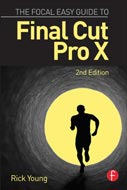Watch part 2 off this demo at:
www.moviemachine.tv/video/lighting-techniques-for-drama-based-cinematography-part-2/210100443/
Tim Palmer, Director of Photography, demonstrates key lighting techniques used in drama based cinematography. Tim shows how to use controlled soft light effectively, how to light an entire room full of people while retaining the natural look – to light without the lighting being seen, and how to create a sparkle in the eye, to bring life to the eyes and face, and to complement the performance of the actor.
In this practical demonstration Tim shows how he uses Dedo Panaura domes suspended from above, to creative a beautiful soft light, along with precision lighting for eye reflexes.
Equipment used: dedolight PanAura, dedolight DLED4, Dedo DPEYE filters.
Check out more about Tim Palmer and examples of his work at:
Tim Palmer Bio.
Tim discovered an interest in photography while reading history at the University of California, Berkeley. After gaining a degree in 1986 he returned to England to pursue a career in photography. He spent time working as an assistant at a photographic studio and soon started receiving commissions to shoot editorial for fashion magazines, daily and Sunday newspapers.
Always a passionate filmgoer Tim could see how his photographic experience could be applied to lighting for film and now, beginning to understand the function of the director of photography, he realized that this role encompassed everything he loved most about films – the power of the camera and lighting to tell stories visually.
Branching out from stills work he found a position as a camera trainee on a feature film, which led on to work as a clapper loader on features, television dramas and commercials. This gave him the grounding and on set experience to realize that, one day he would be able to fulfill his dream of becoming a director of photography.
In 1994 Tim gained a coveted place on the cinematography course at the National Film and Television School in Beaconsfield. He spent the following three years working on as many projects as possible and was fortunate enough to be taken on by the agency Casarotto Marsh on the strength of his graduation film. Coincidentally Casarotto also chose to represent the film’s director John McKay and he and Tim have gone on to work together on numerous productions since.
Soon after, Tim began establishing himself in the field of television drama and over the past fourteen years has assembled a wide variety of credits including work on a mixture of groundbreaking dramas, long running television series and historical documentaries. He is always looking for ways to embrace new technology. In 2004, on the period drama “A Waste of Shame” Tim was one of the first DoPs to adopt P&S Technik’s pro 35 device to achieve a true 35mm look on High Definition. For the next two years, at least until the advent of the Genesis and D21, this was the only method of realizing that look.
In 2010 Tim was director of photography on ‘The Road to Coronation Street’, the first mainstream British television drama to be shot entirely on the Canon 5D Mark 2 digital SLR camera. Little did he know twenty five years ago, on the brink of a photographic career, that the stills camera he was experimenting with then would one day metamorphose into a device capable of shooting a theatrical feature. In 2011 ‘The Road to Coronation Street’ went on to win the British Academy Film and Television (Bafta) award for Best Single Drama.
Another award winning production followed soon after. “We’ll Take Manhattan”, made with Tim’s long time collaborator John McKay for the BBC, won the 2012 Prix Europa for best television drama.
In 2013 Tim was elected a member of the British Society of Cinematographers. He went on to photograph the television adaptation of Kate Summerscale’s best selling novel ‘The Suspicions of Mr Whicher’, his work on which received a nomination for best cinematography at the 2013 Royal Television Society awards.























